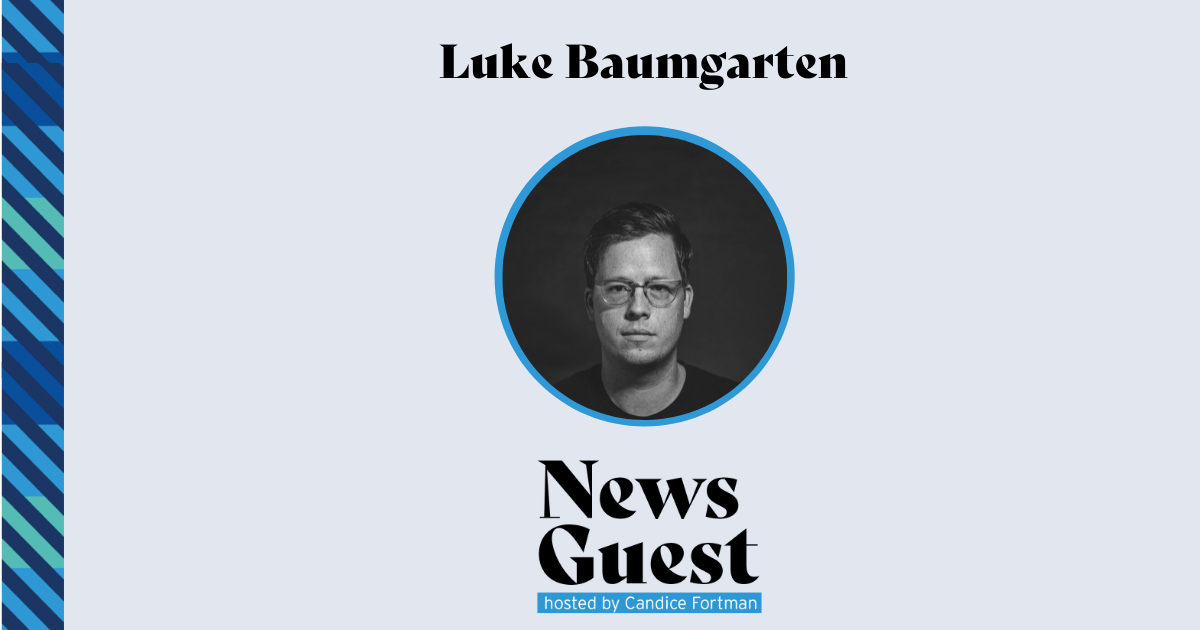How RANGE built a newsletter audience from scratch — and converted 9 percent of readers to paid members
In our latest episode of News Guest, Luke Baumgarten talks about the lessons he’s learned

Last summer, Luke Baumgarten was one of 24 aspiring news entrepreneurs selected to participate in the inaugural Startups Boot Camp, a partnership between LION and the Google News Initiative.
Today, he’s the publisher of RANGE, a solutions-focused local news organization with nearly 1,000 newsletter readers and 100 paying members.
In the latest episode of News Guest, our host and Outlier Media executive director Candice Fortman talks with Luke about his first six months as an independent news founder, plus the creative growth tactics he used to build his audience from scratch.
You can listen to this episode and subscribe to News Guest on Spotify, Apple Podcasts, or wherever you do your streaming.
Here are a few highlights from the conversation:
RANGE kickstarted its reader acquisition strategy with a mass email.
Personal outreach to friends, family, and acquaintances can be an effective way to drive newsletter sign-ups — but it’s time-consuming to do at scale.
To walk that tightrope, Luke exported more than 4,000 contacts from his Gmail account and then sent them all a single GMass marketing email, in which he explained his motivations for launching RANGE and encouraged people to sign up.
“That heart-on-sleeve stuff doesn’t come easy to me,” he said, “but I think that’s the single most effective thing I’ve done to get where I’ve gotten.”
Luke was able to export 4,000+ contacts from Gmail in part because he’d spent years doing community work as a journalist and organizer — but also because he’d been diligent about building his contact list over the years.
Gmail users can set up their accounts to build a contact list automatically, so if you think you’ll ever want to send a mass marketing campaign to your entire network, it’s worth double checking your settings now to make sure you don’t miss an opportunity later.
Need help with audience growth? Send us your burning questions about paid user acquisition for an “Ask Me Anything” chat with digital publishing consultant Phillip Smith on Thursday, June 17.
A membership pitch about ‘keeping news free for everyone’ is paying off so far
A successful newsletter business will often convert 5 to 10 percent of its free newsletter readers into paying members or subscribers, according to benchmarks shared by Mailchimp and Substack.
RANGE’s conversion rate of 9 percent is right in line with those numbers — but its strategy for getting there is somewhat unconventional.
Instead of putting subscriber-only content behind a paywall or rolling out special member perks, Luke has settled on a NPR-style pitch that focuses on supporting RANGE as a public service and keeping it free to everyone.
So far that strategy is working, and it’s also perfectly aligned with how Luke thinks about RANGE’s mission and its ability to inspire change.
“If this is going to be a grassroots effort to change our city from the ground up, doing that from behind paywalls is not going to work,” Luke said. “So with my [membership] asks, I try to say: ‘If I can help it, I’m not going to paywall anything, and this is the reason why. And if that resonates with you and can afford it, please support us.’”
Luke said he still has plenty of work to do to maintain or grow RANGE’s 9 percent conversion rate (because it often gets harder to convert readers to paying members once you’ve tapped out your initial network of friends, family, and other early adopters).
But Luke’s success so far is a good reminder that there are many different ways to build a successful membership program, as long as you understand your value proposition and how to tell a compelling story about it.
The biggest barrier to RANGE’s audience growth is bandwidth, not ideas.
Luke has no shortage of ideas for how to accelerate RANGE’s user growth, and he’s already experimented with some of them, including paid marketing on Facebook and organic engagement on Reddit.
The challenge, he says, is finding enough time to fully execute those strategies and start generating consistent results.
“None of the things that didn’t work have necessarily failed because I put all the effort I possibly could into them and it was just a failed strategy,” Luke said. “Everything is sort of [to be determined] in terms of what’s workable.”
Luke also noted how much he learned about launching a news startup, and specifically, user acquisition, from Startups Boot Camp Director Phillip Smith.
If you’re interested in getting expert help to design and launch your own local news business, applications for the 2021 GNI Startups Boot Camp will open later this month. Be sure to subscribe to LION’s newsletter for updates and stay tuned for more details about this year’s program.
News Guest is a monthly podcast featuring practical advice from LION members and other entrepreneurs who are changing the news business. You can subscribe on Spotify, Apple Podcasts, or wherever you do your streaming
Sign up for the weekly newsletter
Join the LION mailing list to get our weekly roundup of opportunities and resources for news entrepreneurs. View our most recent issues.
Related Articles
How five LION members are maximizing revenue and community engagement through events
Whether you’re a solopreneur or part of a larger team, there are in-person event opportunities for everyone.
Jess deRivera joins LION Publishers as our Membership Services Manager
She’ll help provide a seamless experience to current and prospective members.
Four big opportunities that local news publishers can pursue right now
Here’s how to capitalize on each one.
